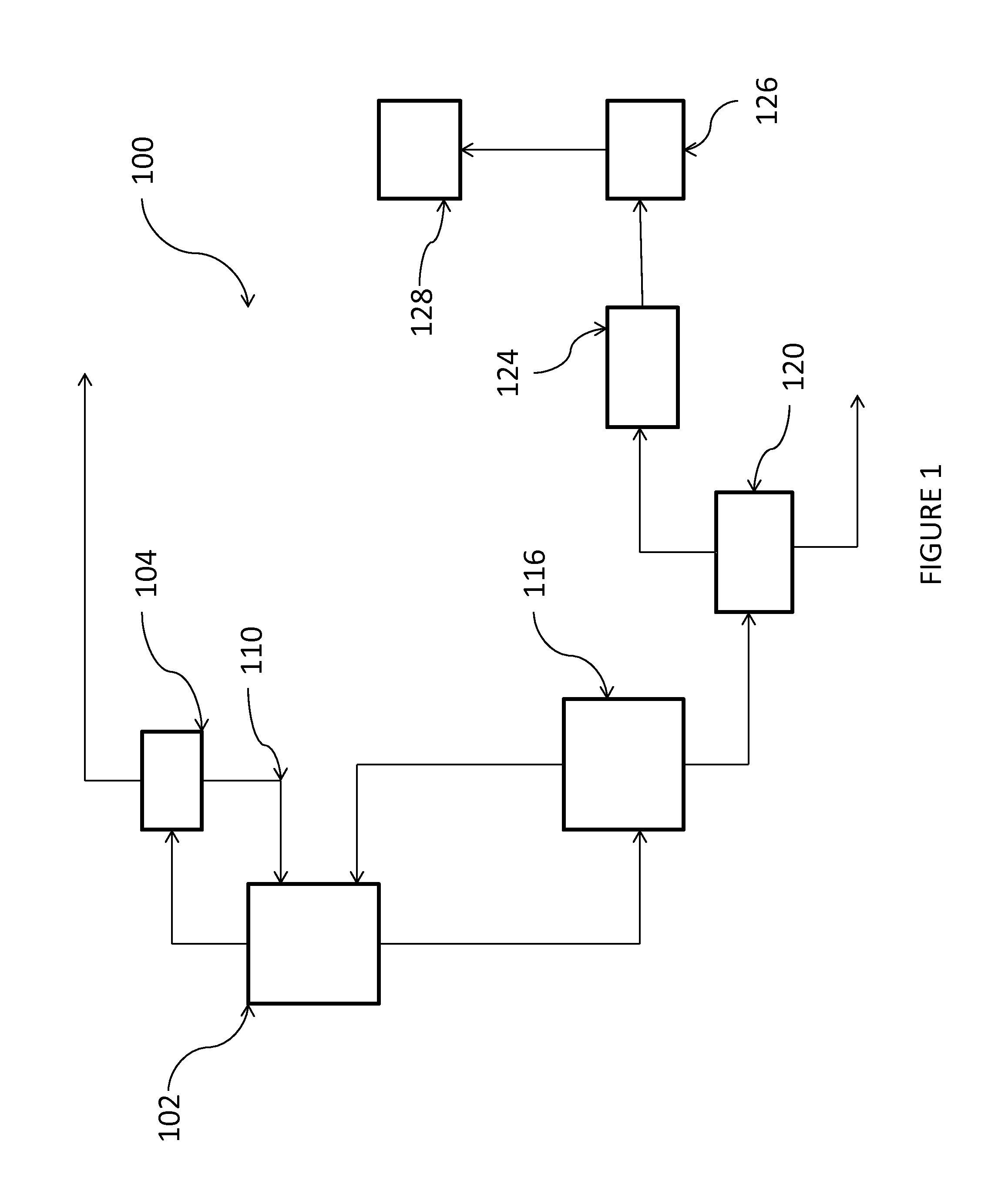Process for the production of chlorinated propenes
a chlorinated propene and propene technology, applied in the field of chlorinated propene production processes, can solve the problems of prohibitively high cost, limited commercial availability of many chlorinated propenes, and prohibitively expensive to be economically produced, etc., to achieve enhanced process selectivity, low cost, and fewer steps
- Summary
- Abstract
- Description
- Claims
- Application Information
AI Technical Summary
Benefits of technology
Problems solved by technology
Method used
Image
Examples
example i
[0051]Chlorination of 0.95 gr of PDC to 1,1,2,2,3-pentachloropropane (240aa) is conducted with 4.5 molar equivalent of SO2Cl2 for 8 hours at from 50° C. to 70° C. A 4 dram vial equipped with micro-flea stir bar and water condenser at the overhead padded with N2 is used. The combined catalysts (7 mg I2, 20 mg AlCl3) are added to the solvent under N2 and the reaction is heated to 55° C. for 3 hours. The loss of HCl and SO2 decreased over this period and so the reaction is heated to reflux (70° C. headspace) for 4 hours while monitoring by NMR. At 7 hours another 1 equivalent of SO2Cl2 (1.13 g) is added and reflux is continued for 1 more hour. The reaction content is then added to 5 mL cold water with mixing to give a clear white phase of oil. The bottom phase is carefully pipetted and the aqueous phase extracted with 4 mL of CH2Cl2. The combined organic phase is dried over MgSO4 and evaporated to give 1.55 g (estimated 89% theoretical recovery) of a 4:1 ratio of mainly 1,1,2,2,3-PCP t...
example ii
[0056]This example may be carried out according to the process shown in FIG. 1.
[0057]In reactor 102, PDC is chlorinated in the liquid phase together with recycled trichloropropanes (C3H5Cl3), tetrachloropropanes (C3H4Cl4) and monochloropropenes in the presence of from 1 wt. % to 5 wt. % of AlCl3 and 0.5-2 wt. % of I2, based upon the weight percent of PDC, at a temperature of from 50° C. to 70° C., and a pressure of 200 kPa. The overhead vapor from the reactor is condensed at a temperature of from −40° C. to −10° C. and the condensed liquid fed to separation column 104 set at a pressure of from 500 kPa to 1000 kPa to recover excess Cl2, PDC, monochloropropene, and HCl. The purified anhydrous HCl is taken as an overhead stream from separation column 104, while the bottom stream, comprising Cl2, PDC, and monochloropropene intermediates, is recycled back to chlorination reactor 102.
[0058]The liquid product stream from the chlorination reactor 102 is fed to a separation column 116, opera...
example iii
[0060]A 50 mL flask is charged with 49 g SO2Cl2 and 1.9 g AlCl3 before heating to 60° C. Once so heated, the reactor is charged with 4.1 g PDC and allowed to react for 24 hours. The crude product mixture is analyzed by gas chromatography and found to be 77.2% 1,1,2,2,3-pentachloropropane, 9.2% hexachloropropanes, 4.5% tetrachloropropanes, and 4.5% residual trichloropropanes.
[0061]The crude product mixture is diluted with methylene chloride and charged to a reactor with 2.4 equivalents of aqueous sodium hydroxide. The solution is heated to 42° C. and held for 23 hours. The crude product mixture is analyzed by GC to show that 9% conversion of 1,1,2,2,3-pentachloropropane to the 1,1,2,3-tetrachloropropene is achieved at this low temperature. The remainder of the chloropropane impurities remained unchanged over the course of the caustic cracking procedure.
PUM
| Property | Measurement | Unit |
|---|---|---|
| temperatures | aaaaa | aaaaa |
| pressures | aaaaa | aaaaa |
| pressures | aaaaa | aaaaa |
Abstract
Description
Claims
Application Information
 Login to View More
Login to View More - R&D
- Intellectual Property
- Life Sciences
- Materials
- Tech Scout
- Unparalleled Data Quality
- Higher Quality Content
- 60% Fewer Hallucinations
Browse by: Latest US Patents, China's latest patents, Technical Efficacy Thesaurus, Application Domain, Technology Topic, Popular Technical Reports.
© 2025 PatSnap. All rights reserved.Legal|Privacy policy|Modern Slavery Act Transparency Statement|Sitemap|About US| Contact US: help@patsnap.com


